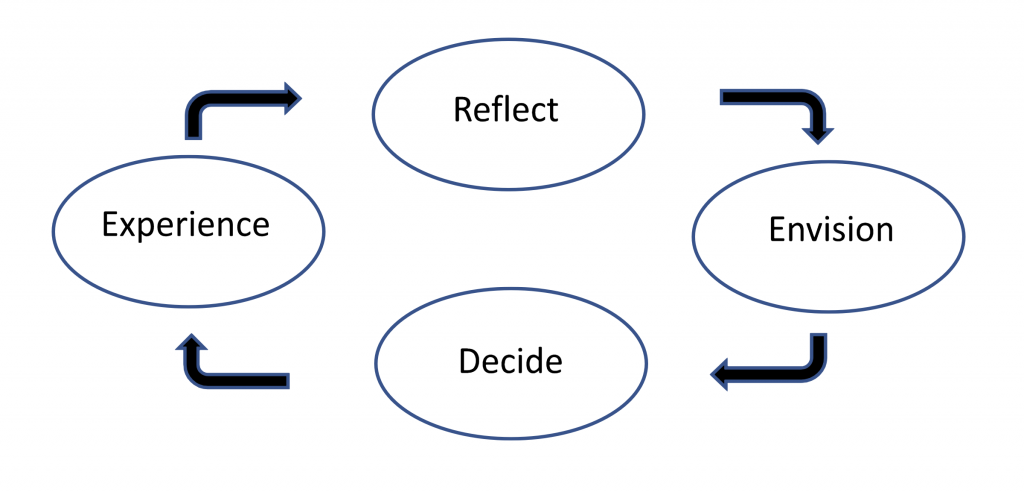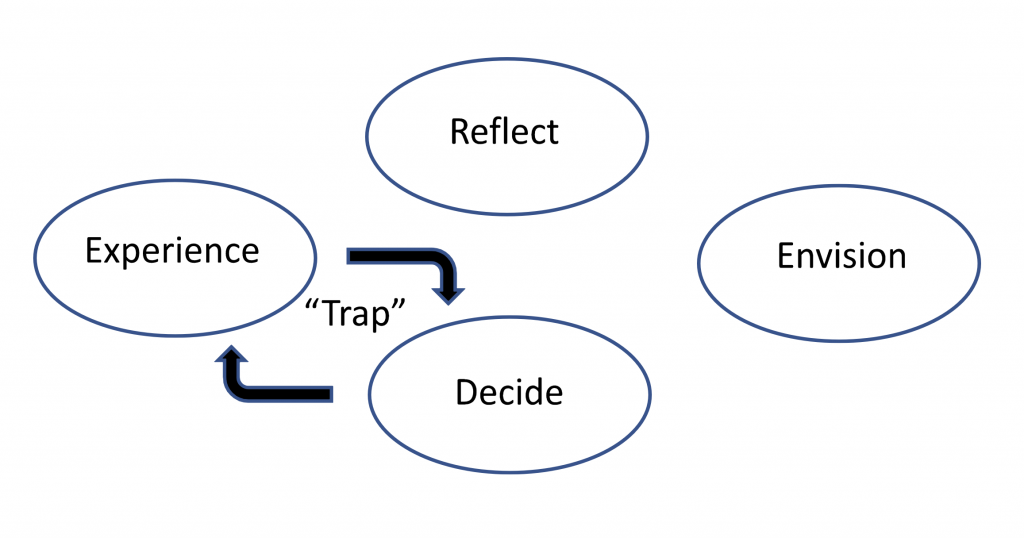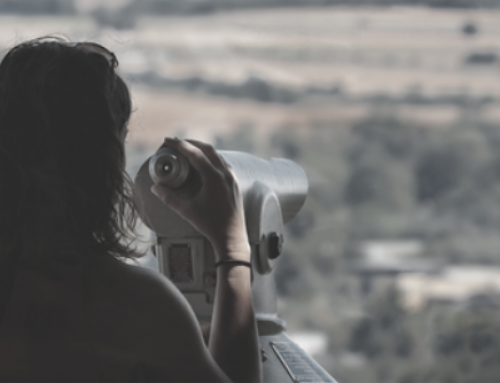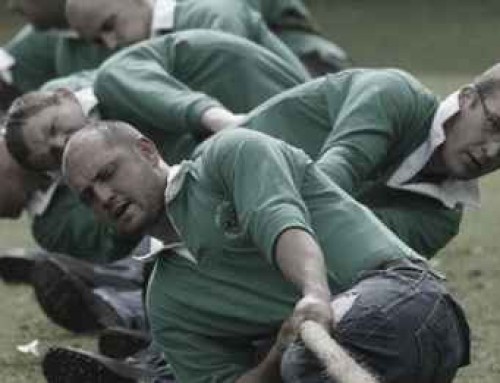By John J. Murphy
As I write this article, I am reflecting on a two-day executive workshop I recently delivered in Denver on mindful leadership and operational excellence. I do this every time I engage in any important activity. I take time to contemplate what I planned to do, what I did, what worked well, and what didn’t work so well. The military refers to these disciplined moments of reflection as AAR’s – After Action Reviews. The idea is to step back and mindfully evaluate the effectiveness of the plan (Did it work?), the execution of the plan (Did we follow it?), and the efficacy of our behavior – all with the intention of ongoing improvement. Competitive sports teams use a similar reflection process, typically including game films, healthy critique, and nourishing discussion.
In the late 1980’s, when I was first getting started as a business consultant, I developed a model that highlights this process and emphasizes the importance of reflection. I call the model The Cycle for Ongoing Improvement. It consists of four steps, arranged in a circle:
As you can see, the model has reflection built into it as a key element in boosting awareness and mindful understanding. This strategy challenges us to step back and evaluate our performance, individually and as a team, and then envision changes and adjustments we can make to improve our performance. It also helps us avoid what I call The Experience-Decide Trap. This trap deceives us when we continue to repeat behavior habitually based on experience without challenging the underlying assumptions, paradigms, and limiting beliefs driving our actions – often hidden deep within the subconscious mind. We just keep doing what we have always done. Take note. This powerful experience-decide trap has literally put some once-great organizations completely out of business. A few well-known examples include Sears, Blockbuster Video, and Borders Books.
Exercise: Stop Right Now and Reflect:
Consider a recent experience you have had that is important to you. For example, this could be a team meeting you held, a speech you made, a class you taught, or a performance you gave. Now contemplate what you intended to do and what happened in terms of results:
- What did you plan to do?
- Did the plan work?
- Did you follow the plan?
- What went well? What do you feel good about?
- What did not go well and why? What concerns do you have? Be specific.
- Take ownership for this experience. Do not cast blame or dismiss it as someone else’s fault. Look internally, not externally.
- What were the underlying assumptions you made going into this experience?
Now move onto the Envision stage:
- What new insights come to you from your contemplation and reflection?
- What can you learn from the experience?
- What adjustments might you make?
- What assumptions and paradigms can you challenge?
- If you were to go through this experience again, what would you do differently?
- What improvements can you make to elevate your performance the next time?
- Consider specifically what you can add, delete, and alter.
This now brings us to a new Decision point:
- What will you do differently next time?
- How will you do this?
- How will you know your changes made a difference?
- What will you measure and how will you do this?
Of course, this then brings us back to experience, a new experience. This is the cycle for ongoing improvement. It never ends. Life is a continuous cycle of opportunity and growth. When we are humble enough and courageous enough to challenge ourselves with mindful reflection and creative vision, we discover that mistakes are not really “bad.” They are learning opportunities in disguise. As James Joyce once wrote, “Mistakes are portals of discovery.”
Exercise: Give Yourself an Example
Now give yourself an example of improvement from your own experience. Consider a past mistake or missed opportunity that you have gained deep insight and knowledge from. This could be a personal or professional situation. Maybe it was a failed relationship, a missed promotion, a job separation, or a lousy performance you gave.
- Define the experience. Replay it in your mind. Reflect on it.
- What happened? Be specific.
- Now consider how this experience has helped you. How has it made you a better person and a more mindful leader?
We have all heard sayings like “Silver linings” and “Blessings in disguise.” What positive outcomes can you uncover from this “negative” experience? When we take time to reflect on our lives, searching for this silver linings, we inevitable find them. We find what we seek. A shift in mindset from blame and finger-pointing to one of ownership and responsibility frees us from self-imposed limitations and empowers us to emerge and grow like a flower blossoms. Flowers do not bloom because they try to. They flourish because they are supposed to. It is their essence. It is inherent in nature. This same life principle is true for all of us. We are designed for growth, expansion, and prosperity. Sometimes, we just need to get out of our own way.
What Better Time to Reflect than Right Now?
During this holiday season and year-end, I urge you to stop, reflect, envision, and make decisions with mindful contemplation, compassion, and care. Give yourself and others a break. If you are beating yourself over something in the past, let it go. Take the lessons learned and move on freely, without shame, guilt, or regret. If you are holding any grudges or attack thoughts, let them go. Forgiveness will free you and elevate you to new heights. Use The Cycle for Ongoing Improvement to learn, grow, adapt, and emerge like the beautiful being that you are. Happy holidays and may the new year bless you with continuous improvement.
John J. Murphy is an award-winning author and the Founder (1988) and CEO of Venture Management Consultants, Inc., a firm specializing in transformational culture change, mindful leadership, Operational Excellence, and high-performance teamwork. Visit his website www.johnjmurphy.org for more information.








Leave A Comment